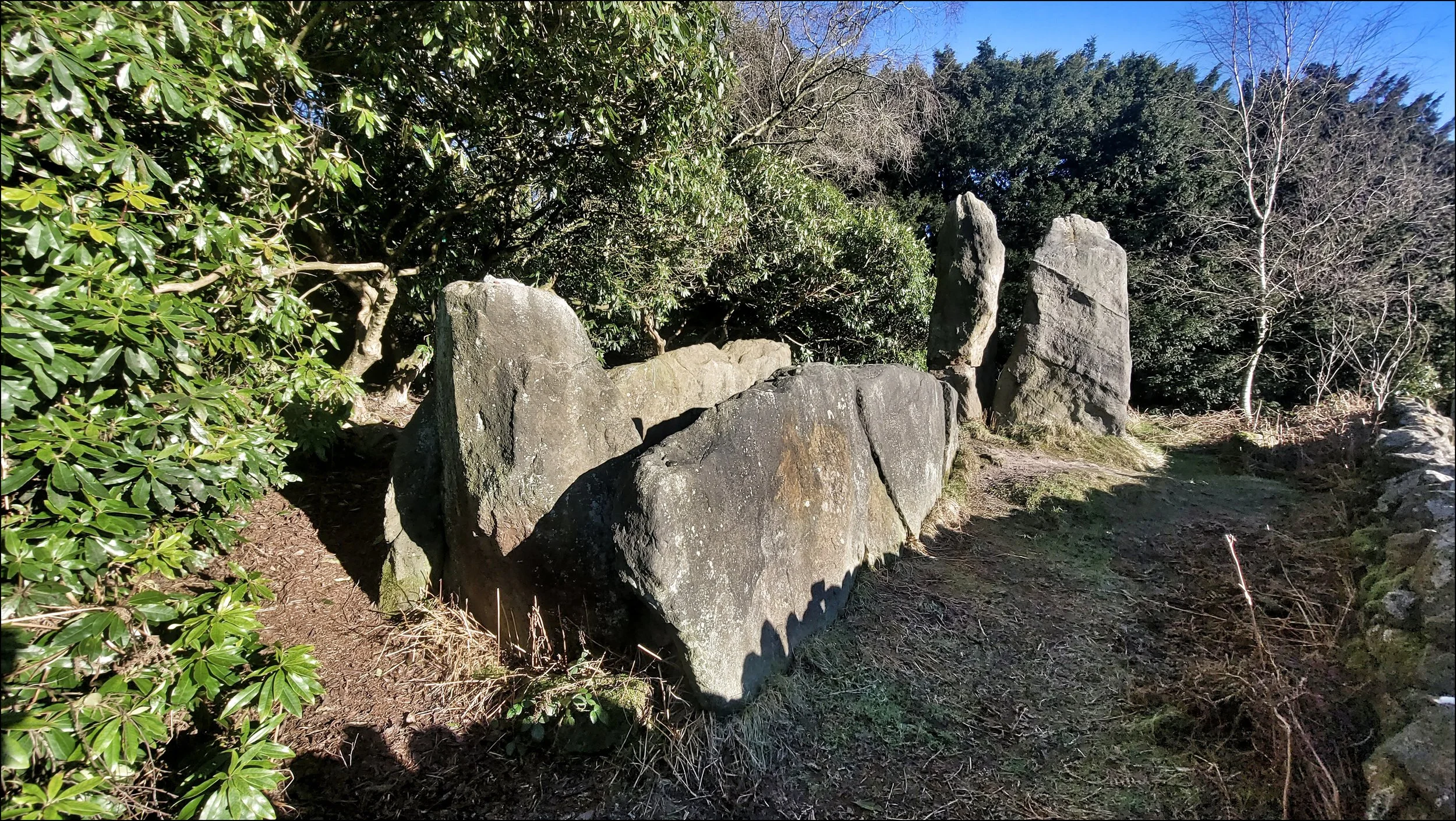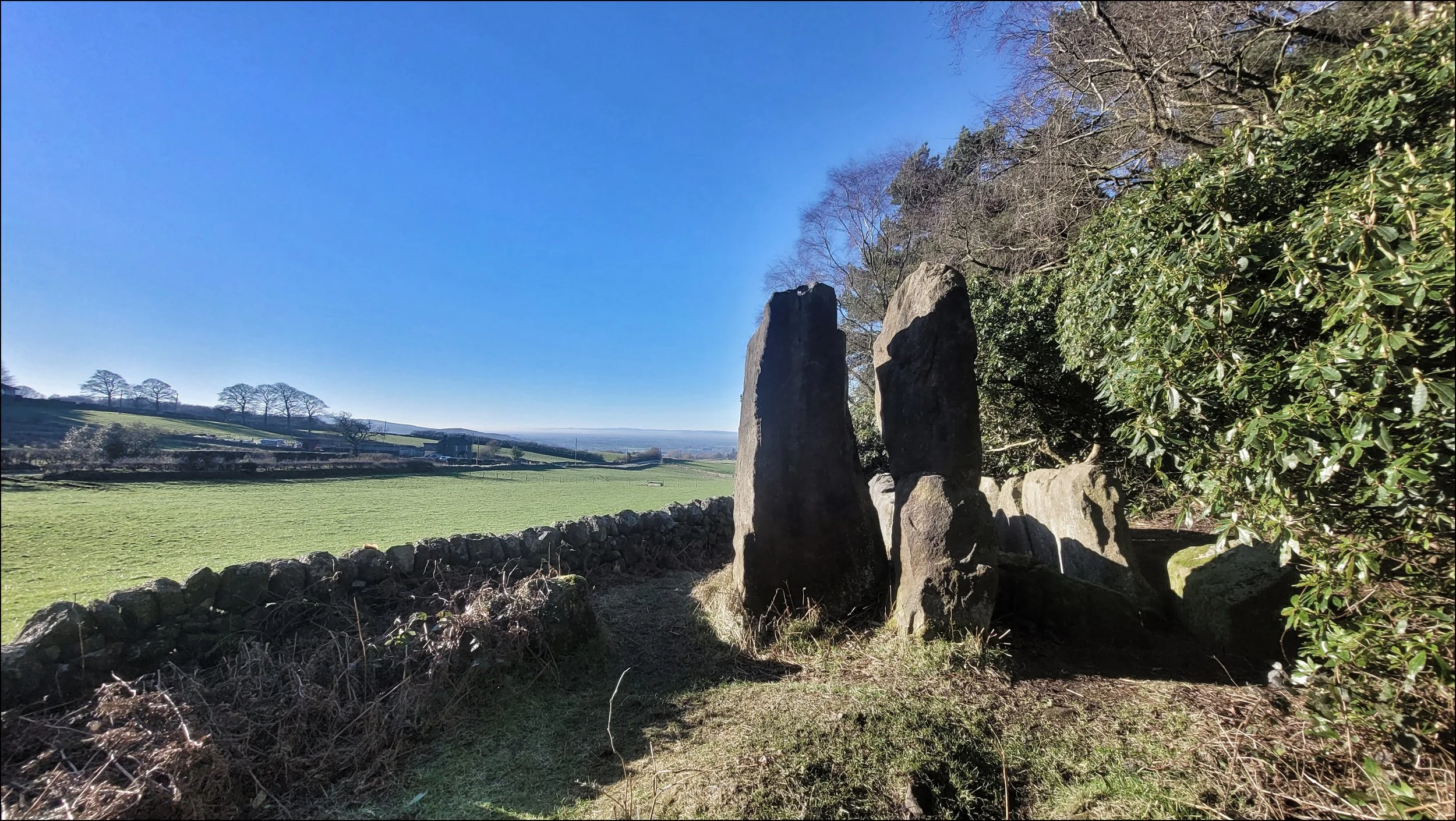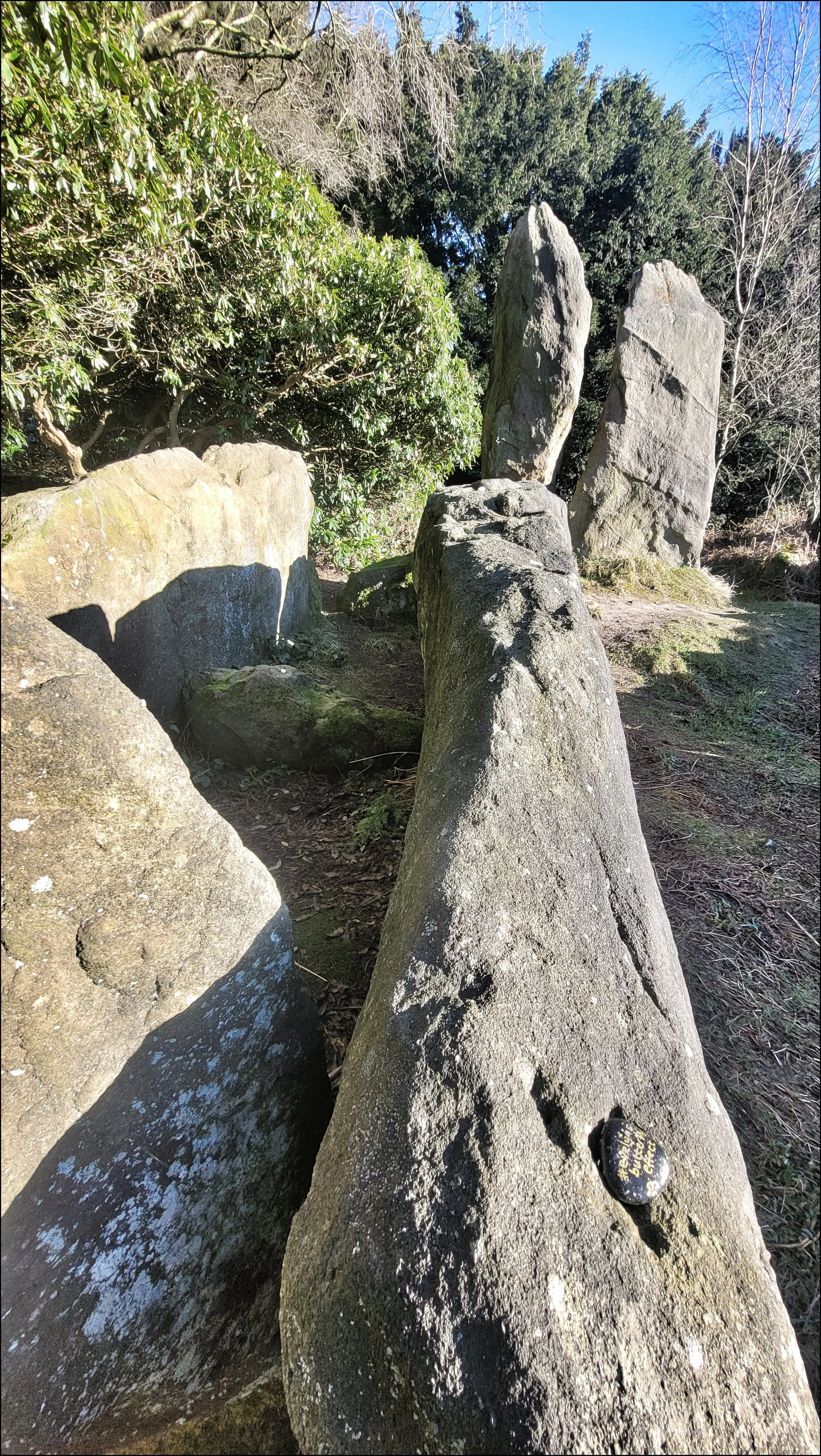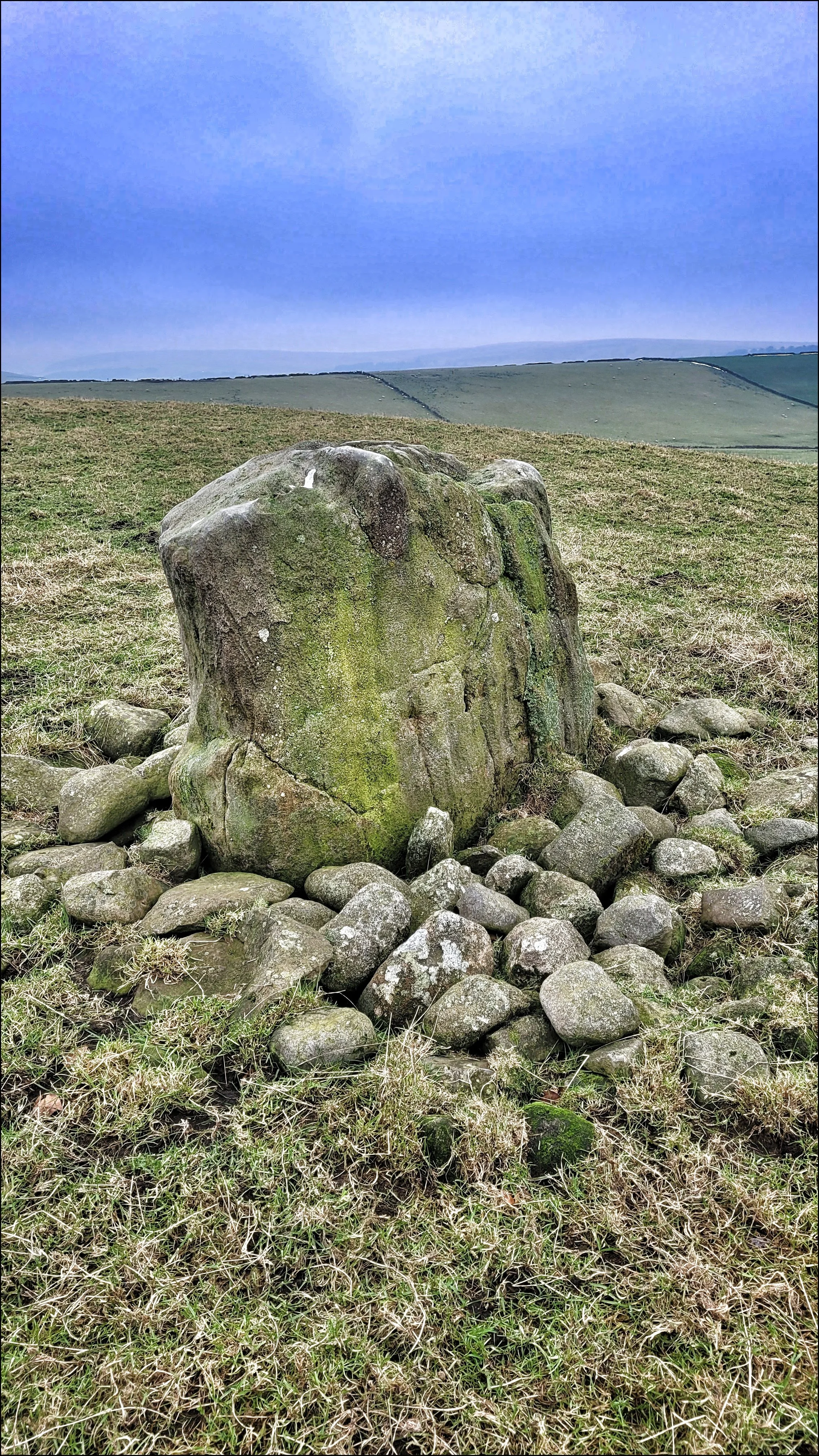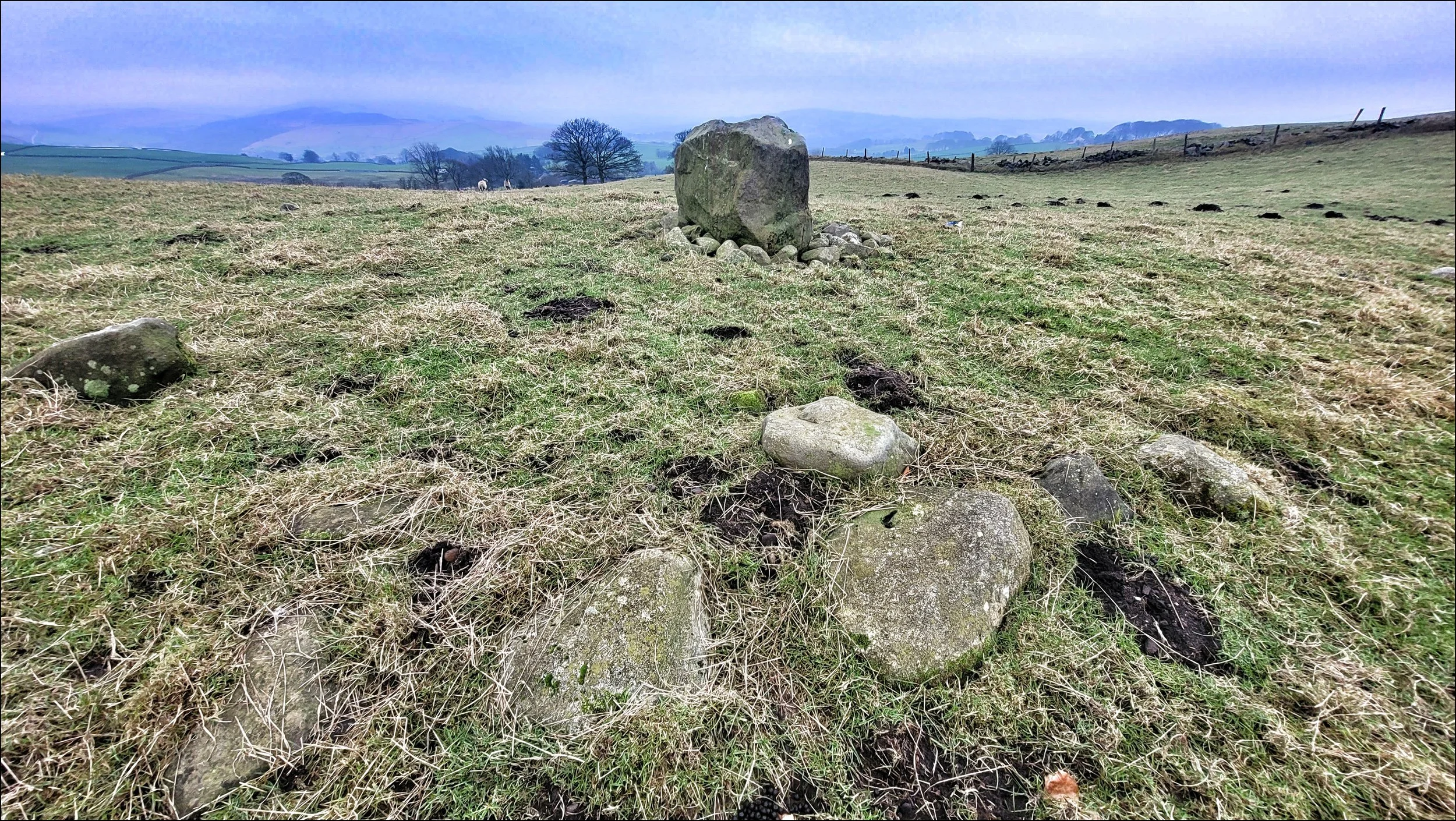A little bit of Scotland in Cheshire
16.01.2025
I had come to the Cheshire Plain to find a Neolithic burial chamber more associated with south west Scotland than central England. The Bridestones, not to be confused with those on the North York Moors , is a Clyde style cairn with similarities to Cairn Holy and Boreland in it’s construction. A short drive from Timbersbrook south for a mile brought me to the driveway of a stonemason’s yard off Dial Lane. I parked by the entrance and with no one around to seek permission I walked a short distance through some trees to a clearing that was just big enough to contain the colossal stones that made up the burial chamber. It was a claustrophobic space surrounded by rhododendron trees and sadly a neglected setting for what is a unique historical structure.
The obvious feature here were the two enormous ten foot portal uprights at the left of the entrance, once elegantly horn shaped but now blunted and worn. There would have been a group of these large stones in an arc but they had been pilfered to make nearby walls and farmhouses. The slender sides of the four metre long chamber slabs were still in situ however but badly cracked from top to bottom. I walked amongst the trees and found hidden stones strewn around the site. It was sad to see this important monument reduced to a marginal existence and despite it being on private land this I felt needed to be rectified. Back at the chamber I was heartened by the sight of winter reef which had been placed on a flat stone at the entrance. My good feel factor didn’t last long however. As I drove out down the driveway I noticed some conspicuously large shaped stones embedded in the wall.
I continued on east towards Winkle south of Macclesfield at the western edge of the Peaks. A narrow straight lane took me up over Brown Hill where I pulled over knowing the Bullstones Stone Circle was nearby. I scouted the landscape around and soon spotted a large stone in a field to my right with the faint trace of smaller stones around it. I hopped over the gate and headed over to the stone scattering the sheep as I got close. The central stone was about a metre and a half square and looked like it was sat on a shallow mound with a collection of loose rocks at it’s base that looked like an added feature. The circle around it was eight metres in diameter with regular sized stones half buried and closely packed together. Remains of a juvenile along with an arrowhead and a knife had been unearthed here in the late nineteenth century, confirming this to be the site of a cairn circle. There were a few outlying stones but it was hard to make sense of their layout. Far beyond them in the distance were the odd slithers of snow on the gentle rolling hills of the Peaks. As the Bridestones had done, The Bullstones reminded me of another Scottish Neolithic type, the larger circle of Glenquicken, also in Dumfries and Galloway.


